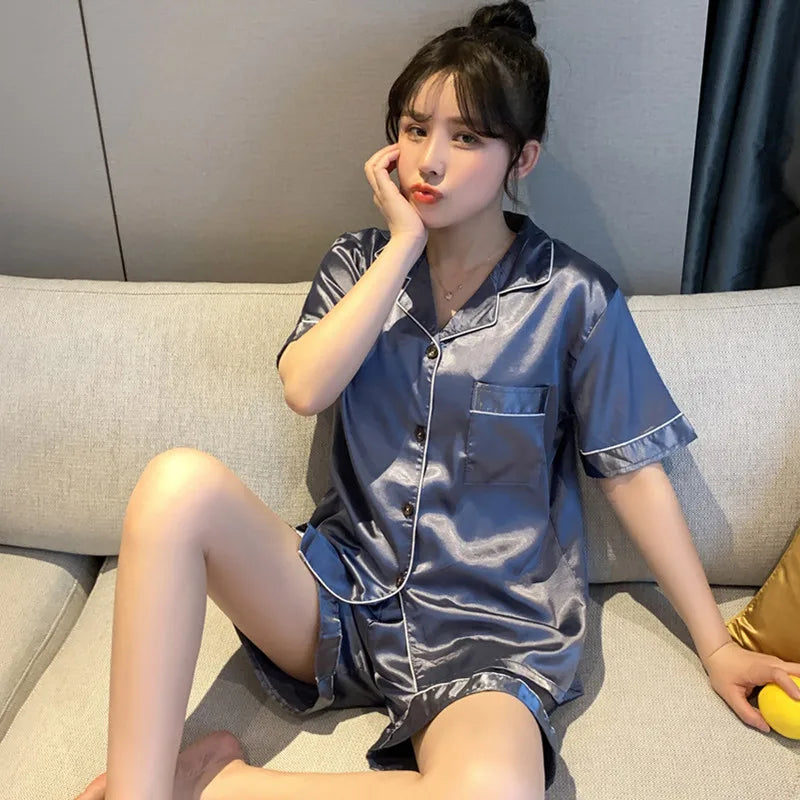The Weight of Comfort: How Much Does a Onesie Weigh?
Table of Contents
- Introduction
- The Basics of Onesie Weights
- How to Choose the Right Onesie
- The Role of Onesies in Sleep and Comfort
- Onesies and Their Impact on Baby Development
- FAQs About Onesie Weights
- Conclusion
Introduction
When it comes to dressing our little ones, parents often find themselves navigating a world filled with questions about sizing, comfort, and practicality. One of the most common queries that arise is, “How much does a onesie weigh?” This seemingly simple question can carry more significance than one might initially think. Understanding the weight of a onesie is not just about curiosity; it plays a crucial role in ensuring accurate weight measurements during pediatric visits, as well as in choosing the right clothing for our babies' comfort and needs.
In the early stages of a child's life, parents are keenly aware of the importance of monitoring their baby’s growth and development. Weight gain is a key indicator of health, and even the lightest garments can influence the readings on the scales. But the weight of a onesie can also affect how we dress our babies for different occasions and temperatures, ensuring they remain comfortable throughout the day and night.
In this blog post, we will explore the average weights of different types of onesies, discuss how they fit into the broader context of baby clothing, and offer practical insights on choosing the right attire for your little one. By the end of this article, you will have a comprehensive understanding of how much a onesie weighs, how this information impacts your parenting decisions, and how to ensure your child is dressed in the most comfortable way possible.
What You Will Learn
- The average weight of various sizes of onesies and how they differ based on fabric and design.
- The significance of knowing the weight of baby clothing when measuring a baby’s health.
- Practical tips for selecting the right onesie for your baby’s comfort and well-being.
Understanding the nuances of onesie weights is not just an academic exercise; it is about making informed choices that promote the health and happiness of our children. Together, we’ll dive deep into this topic, ensuring that you leave with actionable insights.
The Basics of Onesie Weights
A onesie is a versatile garment that often becomes a staple in a baby's wardrobe. Typically made from soft, breathable materials like cotton or a cotton blend, onesies are designed for comfort and ease of dressing. But how much should we expect these garments to weigh?
Average Weights of Onesies by Size
The weight of a onesie can vary significantly based on its size, style, and fabric composition. Here’s a breakdown of average weights for common sizes:
- Newborn Size (NB): Approximately 1.3 oz (37 grams)
- 0-3 Months: Approximately 1.5 oz (42 grams)
- 3-6 Months: Approximately 1.6 oz (45 grams)
- 6-9 Months: Approximately 1.75 oz (50 grams)
- 9-12 Months: Approximately 2 oz (57 grams)
- 12-18 Months: Approximately 2.1 oz (60 grams)
- 18-24 Months: Approximately 2.15 oz (61 grams)
These averages can fluctuate slightly depending on the specific brand and design features, such as long sleeves, additional layers, or embellishments.
Fabric Matters
The type of fabric used in a onesie significantly affects its weight. For instance, a lightweight cotton onesie will weigh less than a thermal or fleece version designed for cooler weather. Here are some common fabrics used in onesies and their implications for weight:
- Cotton: Soft and breathable, cotton onesies tend to be lightweight and comfortable for everyday wear.
- Cotton Blends: Blends that include polyester or spandex may add slight weight but offer additional stretch and durability.
- Thermal Fabrics: Often heavier, thermal onesies provide warmth during colder months, making them a go-to choice for winter.
- Fleece: While incredibly cozy, fleece onesies can be on the heavier side, suitable for colder environments.
Knowing the weight of different fabric types can help you make informed decisions when selecting the right onesie for your baby.
The Importance of Accurate Weight Measurements
Accurate weight measurements are essential during pediatric check-ups. Doctors often require infants to be weighed without clothing to assess their growth effectively. If a baby is wearing a onesie, the additional weight can lead to inaccurate readings, which may cause unnecessary concern for parents.
To mitigate this, understanding the average weight of a onesie allows parents to subtract this weight from the total when their baby is weighed. For instance, if your baby weighs 15 lbs while wearing a 1.5 oz onesie, you can confidently deduce that the actual weight is approximately 14 lbs 14.5 oz.
Practical Tips for Weighing Your Baby
- Zero Out the Scale: If your scale allows, zero it out with the onesie or diaper before weighing your baby. This ensures you only measure the weight of your baby.
- Use a Consistent Method: Whether using a digital scale or a traditional one, ensure you consistently weigh your baby in similar conditions (e.g., same time of day, same clothing) for the most accurate tracking.
- Consider the Diaper: Diapers also add weight, with clean diapers averaging around 0.5 oz to 0.75 oz. Be sure to account for this when weighing your baby.
How to Choose the Right Onesie
Choosing the right onesie for your baby is about more than just weight; comfort, occasion, and functionality all play essential roles. Here are some considerations to keep in mind:
1. Size and Fit
Ensure that the onesie fits snugly without being overly tight. Babies grow rapidly, so it’s often wise to choose a size that allows for some room to grow. Additionally, consider the type of closures—snaps, zippers, or pullovers—based on your ease of dressing and changing.
2. Fabric Considerations
Select fabrics that will keep your baby comfortable. For everyday wear, lightweight cotton is ideal. For colder months, opt for thicker materials like fleece or thermal options that provide warmth.
3. Occasion Specificity
Consider the occasion when choosing a onesie. For casual, everyday use, simple cotton onesies are perfect. For special events or outings, select ones with fun prints or embellishments that reflect your personal style.
4. Ease of Care
Opt for onesies that are machine washable and durable. Babies are prone to spills, spit-ups, and diaper leaks, so you’ll want clothing that can withstand frequent washing.
5. Seasonal Adjustments
In warmer months, short-sleeve onesies are perfect for keeping your baby cool. Conversely, long-sleeve or layered onesies are better suited for cooler weather. Always choose fabrics that offer breathability and comfort for the season.
The Role of Onesies in Sleep and Comfort
At Relaxed Nights, we understand that sleep is a crucial aspect of your baby’s development. A comfortable onesie can significantly contribute to a better night’s sleep. Here’s how:
Optimal Sleep Environment
A lightweight, breathable onesie allows for better airflow, reducing the chances of overheating during sleep. Babies are sensitive to temperature changes, and a well-chosen onesie will keep them cozy without excess bulk.
Nighttime Changes Made Easy
Onesies that feature easy-open snaps or zippers simplify nighttime diaper changes. This convenience allows parents to make necessary adjustments without fully waking the baby, promoting a smoother sleep experience for both the infant and the parent.
Enhancing Bonding Through Comfort
When a baby is dressed in comfortable nightwear, they are more likely to feel secure and relaxed, which can enhance bonding moments during bedtime routines. A soft, snuggly onesie can be the perfect start to a calming sleep environment.
Onesies and Their Impact on Baby Development
From a developmental perspective, the clothing we choose for our babies can indirectly affect their growth. Here’s how:
Encouraging Movement
A well-fitting onesie allows for easy movement, which is essential as babies begin to crawl and explore their surroundings. Fabrics that stretch with their movements will support physical development and encourage healthy exploration.
Sensory Development
The texture of clothing plays a role in a baby’s sensory development. Soft, gentle fabrics like cotton provide comfort and help babies learn about different textures. This early exposure is vital for sensory integration as they grow.
Safety Considerations
Ensure that the onesies you choose are free from choking hazards, such as loose buttons or long strings. Safety should always be a priority in baby clothing, as infants tend to explore with their mouths.
FAQs About Onesie Weights
1. What is the average weight of a newborn onesie?
The average weight of a newborn onesie is approximately 1.3 oz (37 grams).
2. How does the fabric affect the weight of a onesie?
Different fabrics have varying densities, which can affect the overall weight. Cotton onesies tend to be lighter, while thermal or fleece fabrics are heavier for added warmth.
3. Why is it important to know how much a onesie weighs?
Knowing the weight of a onesie is crucial during pediatric visits for accurate weight assessments. It can help parents subtract the clothing weight to determine their baby's actual weight.
4. How can I ensure my baby stays comfortable in a onesie?
Choose the right size, fabric, and style for your baby’s age and the current season. Look for breathable materials, snug fits, and ease of dressing for optimal comfort.
5. Is there a difference in weight between short-sleeve and long-sleeve onesies?
Yes, long-sleeve onesies tend to weigh slightly more than short-sleeve ones due to the additional fabric used in their design.
6. Can the weight of the onesie affect my baby's health?
While the weight of the onesie itself is not a health concern, it can influence how accurately a baby's weight is measured during check-ups. Choosing lightweight garments is advisable for weighing purposes.
7. How often should I wash my baby's onesies?
It’s recommended to wash your baby’s onesies after each use, especially if they have been soiled or are damp from sweat or drool. Opt for machine-washable fabrics for convenience.
Conclusion
Understanding how much a onesie weighs is more than a trivial curiosity; it is a practical consideration that can influence how we dress our babies and monitor their growth. By choosing the right onesies based on size, fabric, and design, we can ensure our little ones remain comfortable and stylish in their everyday lives.
At Relaxed Nights, we believe in the importance of comfort and elegance in every aspect of life, including our little ones' clothing. Our collection of premium night dresses and sleepwear is designed to provide the utmost comfort while allowing you to embrace elegance in every moment. Explore our curated collections today to find the perfect attire for your family’s nighttime routines. Together, let’s ensure that every night is a relaxed night!
For more about our offerings, check out our Onesies Collection and discover the comfort that awaits both you and your little one.



